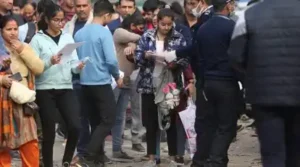Context:

• The article raises concern over rising unemployment and persistent vacancies in central and state government sectors, calling it both an economic and governance failure.
Key Highlights / Details:
Current Status of Unemployment
• Youth unemployment remains high
• India’s workforce participation rate among the lowest globally
• Over 3 crore applicants for just 64,000 railway jobs
• 41 lakh government posts lying vacant across Union & States
Vacancies in Public Sector
• Healthcare: 1.9 lakh doctor posts vacant
• Defence: Shortage of officers in armed forces
• Education: Over 10 lakh teacher posts vacant
• Railways, PSUs, LIC, Judiciary facing staff shortage
• Police: 5.3 lakh positions vacant
Consequences of Job Vacancies
• Affects public service delivery in health, security, infrastructure and justice
• Weakens welfare state functions
• Delays infrastructure projects & economic growth
• Increases public distrust in governance
Government Steps & Challenges
• Rozgar Melas announced but hiring process slow
• Contractual hiring rising – poor job security
• Automation in government services shrinking entry-level jobs
Relevant Prelims Points:
• NSSO Labour Force Participation Rate
• CMIE Unemployment Data
• UPSC: constitutional body Article 315
• National Career Service (NCS) portal
Relevant Mains Points:
• Employment generation as a governance priority
• Link between unemployment, poverty and social unrest
• Way Forward:
– Fill sanctioned posts through mission-mode hiring
– Labour-intensive sectors push – textiles, tourism, MSMEs
– Promote Skill India 2.0 with industry tie-ups
– Expand apprenticeship and gig-worker protections
– Strengthen rural job guarantee schemes




